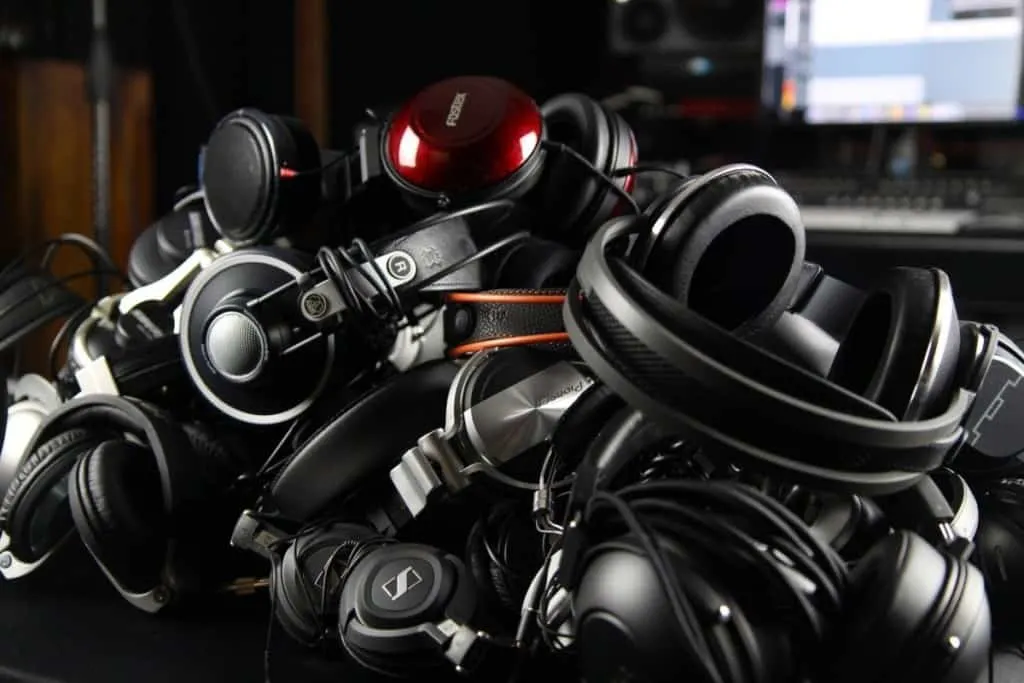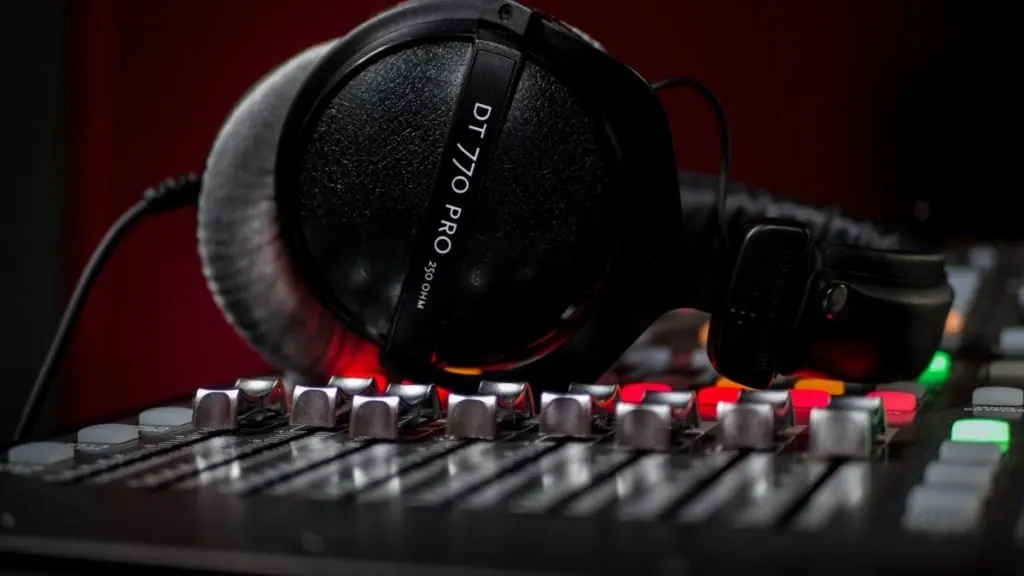Whether you’re mixing, recording, or simply listening to some audio, headphones are an integral piece of equipment. If the need arises to use two or more pairs of headphones simultaneously, there are two devices that make this possible.
Headphone Amps vs Splitter – What Works Best?
When using multiple pairs of headphones, a splitter is more effective and convenient than an amp. Splitters are easy to set up, and require no other cables or adjusting of controls to split the signal. Headphone amps offer more options but are more complex.
Splitters may be the best option for using multiple headphones at once, but headphone amps are more useful for a range of other purposes. To answer this question definitively, one must explore the functions of both devices, and establish their capabilities.
If all you need is a device that will make using two sets of headphones possible, a splitter will suffice. However, if you need more control over the different aspects of the sound, then a headphone amp could be the best solution.

Comparing Headphone Amps With Splitters
When considering what works best out of a headphone amp and a splitter, you need to predetermine exactly what purpose you intend to use the device for. Both are capable of routing sounds into separate headphones simultaneously, but that is the sole purpose of a splitter, whereas a headphone amp is capable of much more.
When choosing the various components of an audio setup, it’s always tempting to choose the devices and products that offer the most options. In many cases, this doesn’t actually improve the functionality and efficiency of the setup. Sometimes, choosing more basic devices that cater only to your requirements can save you time, space, and effort.
A splitter is a prime example of this. These simple devices work best when they are employed to perform the role of duplicating the signal from an audio source such as a laptop, phone, or interface, and routing it through multiple sets of headphones. They achieve this by sending the audio that comes from a singular device, without compromising on quality.
Splitters contain a plug connector, with multiple audio inputs. The size of the inputs varies, with some being specially designed for 6.35mm headphone connectors, and others for 3.5mm varieties. Headphone splitters work best when used on their own, and no other equipment is required for them to fully function.
- I have written an article the discusses the difference between headphone amps and preamps. You can read it here.
Also, headphone splitters can be used with devices like headphone amps, mixers, or audio interfaces. One of the reasons they work best for the sole purpose of signal splitting is their versatile connectivity, which allows you to use them on their own or with another device if you wish.
In comparison, headphone amps work best when you require more control over the various aspects of the audio output. Like splitters, some of these devices do allow you to route an audio signal through multiple headphones simultaneously.
On top of that, they also play a vital role in making sure that any sound can be heard through a pair of headphones.
Check out this headphone amp here on Amazon
When discussing headphone amps, it helps to split them into two categories: inbuilt amps, and external amps. Most decent headphones have amps built into them because, without these devices, the output signal would not be strong enough to be audible.
The primary purpose of a headphone amp is to take the signal that has been converted from digital to analog by a device known as a DAC (digital-to-analog converter) and amplify it to the optimal level for playback through a pair of headphones.
An external headphone amp would be necessary for a few scenarios. If your headphones are simply not loud enough, the device would allow you to manually adjust gain and volume settings to solve this problem. Also, if you were using a standalone DAC, you would require a headphone amp for it to function.
The last and least likely reason you would require an external headphone amp is if you suspect the sound card in your computer has a high impedance output which is resulting in the tone of the headphone’s audio being noticeably altered.
Dual Splitters And Multi Splitters
We’ve established that for the purpose of simply routing an audio signal through two pairs of headphones, a splitter works best. But what about if you need to route the signal through more headphones? For this, multi splitters are the best option.
The average splitter will contain two headphone inputs and an output that connects to the device which is responsible for audio playback.
This is fine if you only need to route the audio signal through a maximum of two pairs of headphones, but if you needed to send it through more, you would need to choose a splitter with an adequate number of inputs.
There are many splitters available that can route the signal through multiple headphones. These range from three inputs, all the way to six, or even more in some cases.
Take a look at this video to see what a headphone splitter looks like.
Splitters work best for sending audio through multiple headphones because they:
- Allow you to route the same signal through multiple headphones
- Offer a range of connectivity options
- Are available with many inputs
- Require no external hardware or cables to function
- Are relatively inexpensive
There are, however, some drawbacks to splitters that need to be considered.
When you split the output of a receiver between two separate pairs of headphones with the exact same impedance level, this results in the amplifier’s load being doubled, thus causing some loss of output volume and increasing the possibility of unwanted noise.
Splitters are best used for convenience, rather than in a situation when audio quality is of great importance. For example, if you are traveling with someone and want to listen to music together from the same device, splitters are the best option for doing so quickly and efficiently.
- In scenarios where you need to best possible playback quality, such as recording, mixing, live sound purposes, or simply wanting to get the best experience when listening to music or watching a movie, then using a headphone amp would be a better option.
Check out my article called “Are expensive headphones worth it” You can read it here.

The Situations When Headphone Amps Work Best
When comparing headphone amps and splitters, there is one area that the former undoubtedly works best – audio quality.
These sophisticated devices ensure that you get the best possible sound from your headphones. Although the more basic headphone amps only have one output, many top-end models can be used to power multiple sets of headphones, thus replacing the need for a splitter.
Standalone headphone amps also offer the benefit of being able to adjust certain aspects of the audio before it reaches the headphones.
In comparison, splitters don’t allow you to mix the individual settings for each pair of headphones, so the sound that comes through one of them is always identical to the sound that comes through the other pairs.
Headphone amps often feature individual gain and volume settings for each headphone output. If you are using headphones for recording, this is invaluable, as it allows you to set different levels depending on the needs of each musician or performer.
- It’s safe to say that for any recording purposes, headphone amps work best.
Additionally, headphone amps also ensure that the sound quality is not compromised.
Whereas a splitter simply divides the output between two pairs of headphones with the exact same impedance, a headphone amp powers each set individually, so the impedance isn’t affected and the sound quality remains pristine.
For simply playing back audio in a setting where quality isn’t of paramount importance, it’s fair to say that a splitter is a good option. These devices are inexpensive, easy to set up, and take up very little space.
With that being said, for any purpose that requires individual mixes of headphones, level adjustment, and the best possible audio quality, a headphone amp definitively works best.
In the table below, you can see a comparative summary of the two devices.
| Headphone Amp | Splitter |
| Offers control over individual headphone outputs | One volume setting for all connected headphones |
| Protects audio quality | Shared impedance negatively affects the quality |
| Price varies depending on the model | More affordable & convenient |
| Offers gain & volume controls | No additional controls |
Related Questions
Do you need a headphone amp if you have an audio interface?
Audio interfaces often include one or more headphone outputs with volume controls. This means you don’t need a headphone amp, but they are still useful because they give you more freedom over the various settings applied to each pair of headphones.
Do headphones need phantom power?
Only condenser microphones require phantom power. Headphones are line-level devices, so they don’t require the +48v boost that phantom power provides to some microphones.
Check out my article on phantom power here.
Can too much volume or gain damage headphones?
It’s a common misconception that high volumes will damage headphones. The internal speakers are designed to cope with the maximum volume they can produce. High volumes can damage your hearing, though, so it is not advisable.
I hope this clears up any questions you had about headphone amps vs splitters thanks for stopping by!
